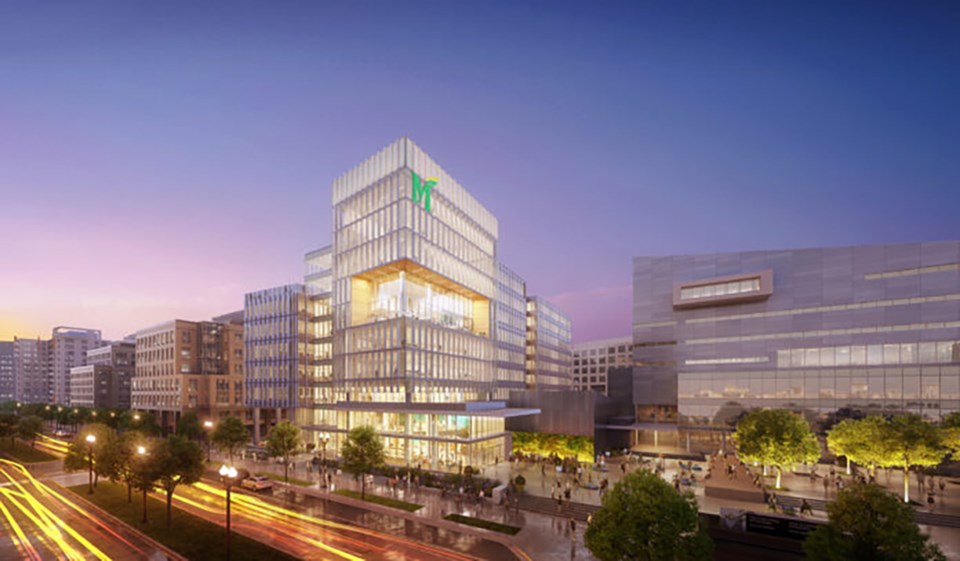The timetable appears to be holding as construction continues on a centerpiece building for George Mason University’s Arlington campus in Virginia Square.
Hundreds of Clark Construction workers and subcontractors are toiling away and progress is being made on “Fuse,” the name of the 345,000-square-foot building that will provide a home for both university programs and private-sector partners.
The building, located along North Fairfax Drive, is set for topping-out around September, with industry tenants moving in beginning in the summer of 2024 and the university starting to occupy its space the following spring.
The building sits on land occupied from the 1950s to the 1970s by an outlet of the now-defunct Kann’s Department Store. When its Virginia Square location was forced to close in the mid-1970s owing to recessionary conditions, George Mason officials purchased it, and it served as the nucleus for future university growth on adjoining parcels.
(The old Kann’s building, which at one time was home to the university’s law school, was razed to make way for the new building.)
When complete, the new structure will provide a home for Mason’s Center for Digital Innovation and the university’s new School of Computing.
In addition to land on which the new Fuse building will rise, the Arlington campus includes the Antonin Scalia Law School, the Schar School of Policy and Government, the Jimmy and Rosalynn Carter School for Peace and Conflict Resolution, programs in Arts Management and the School of Business, Mason Enterprise, and Continuing and Professional Education, as well as meeting and conference facilities.
A “visioning” process on Mason’s physical facilities across Northern Virginia, which wrapped up last year, ended largely with the view that the Arlington campus did not need more intense development beyond what was in the works. But some tweaks were suggested, including better connectivity among buildings, better pedestrian crossings of Fairfax Drive and adding vibrancy to the large but often empty plaza that fronts Fairfax Drive.



